10 Types Of Oak Trees You Can Plant In The South
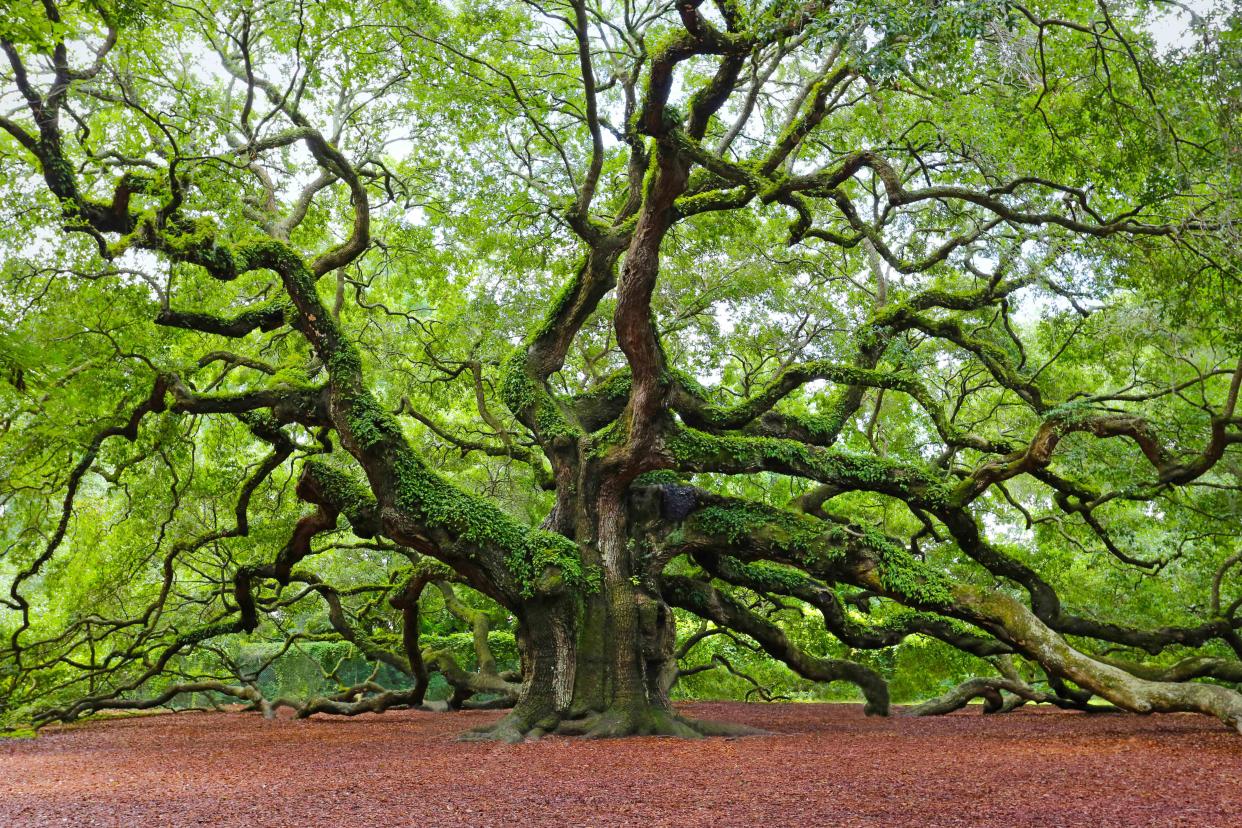
Getty Images
There’s a reason it’s called the Mighty Oak: Oak trees are stately trees that can live for hundreds (yes, hundreds!) of years. “If you want to plant a tree your great-grandkids can enjoy, go with an oak,” says Greg Huber, a Georgia registered landscape architect (RLA), and program coordinator of the certified landscape and plant professional programs at the Georgia Center for Urban Agriculture, University of Georgia. “There’s tremendous variety, and oaks have a classic beauty that feels solid and unchanging.”
Oaks also provide habitat for birds, mammals, and pollinators. In addition, mature oaks produce acorn crops regularly, a favorite food of many kinds of wildlife. But oaks aren’t a species that should be planted in small suburban plots: The tallest types can reach 100 feet tall and 80 to 100 feet wide. Even the smallest oaks are 30 to 40 feet tall and wide. They’re also one of the more slow-growing trees compared to other types, gaining approximately a foot per year, while some trees, such as maples, may grow at twice that rate, says Huber.
Because of its slow growth rate, planting an oak tree is an act of goodwill. Although you won’t get to see your tree reach its mature size, there’s still something to be said for investing in future generations. “Oak species are a critical part of the urban and rural canopy for humans and wildlife, ” says Huber. “In a fast-paced world, maybe we should plant something slow and steady.”
Ahead, are the most common types of native oak trees that thrive in the South:
White Oak
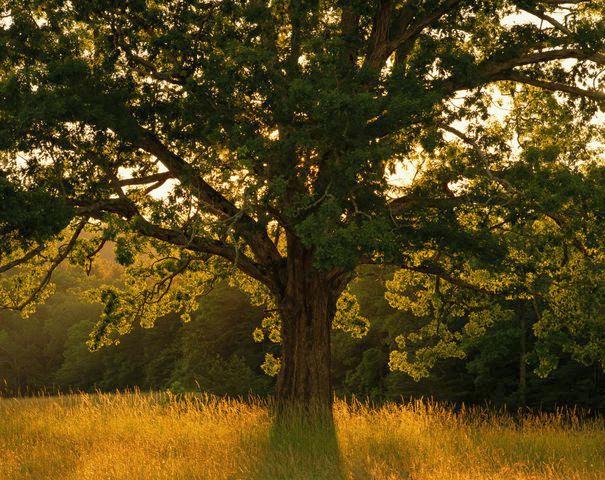
Getty Images
Botanical Name: Quercus alba
Height: 50 to 135 feet
Spread: 50 to 80 feet
White oaks have attractive scaly, greyish bark and lobed leaves with rounded tips. The foliage turns a pretty mottled reddish hue in fall. This tree also can live for a few hundred years.
Southern Red Oak
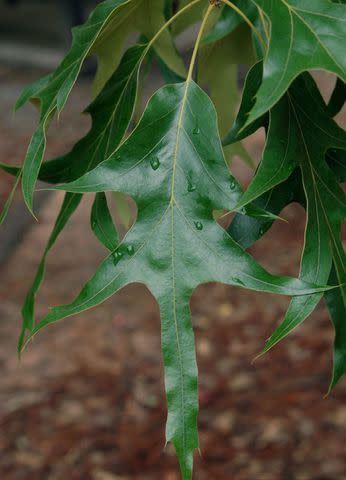
Chris Evans, University of Illinois, Bugwood.org
Botanical Name: Quercus falcata
Height: 60 to 100 feet
Spread: 50 to 60 feet
Southern red oaks have glossy, deep green leaves with tan undersides. It has an upright form when young, with a more rounded shape when mature, and grows in sandy or clay loam or gravelly soils. It also lives for 200 to 300 years.
Chestnut Oak
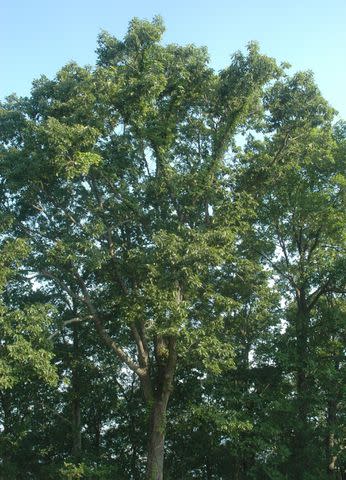
Chris Evans, University of Illinois, Bugwood.org
Botanical Name: Quercus montana
Height: 50 to 70
Spread: 50 to 70
This oak is typically found on dry, rocky ridges, including in the mountains. The mature tree has deeply textured light gray bark, similar to a chestnut tree.
Live Oak
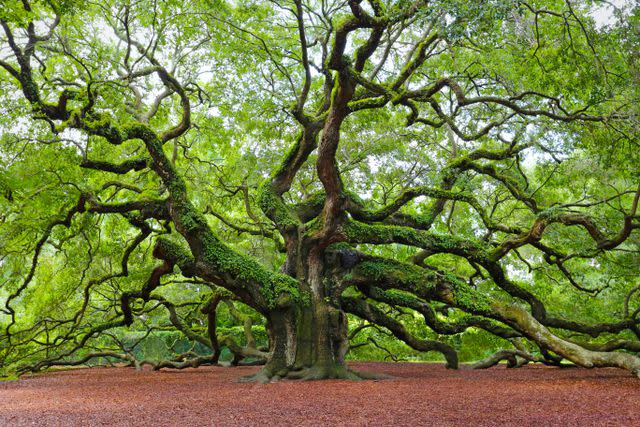
Getty Images
Botanical Name: Quercus virginiana
Height: 40 to 80 feet
Spread: 30 to 100 feet
This magnificent oak has a striking presence with horizontal branch intersections and leathery, elongated leaves that have silvery undersides. It retains its leaves until new ones leaf out. Live oaks adapt well to poor soils, such as coastal plains, and can live for centuries (The Angel Oak in Charleston, South Carolina is estimated to be 300 to 400 years old!).
Georgia Oak
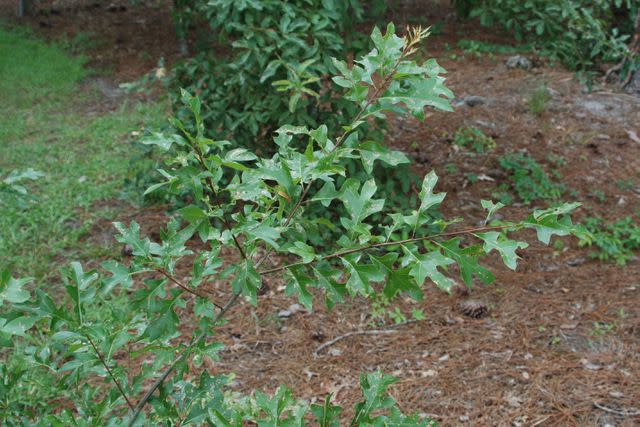
Chris Evans, University of Illinois, Bugwood.org
Botanical name: Quercus georgiana
Height: 25 to 50 feet
Spread: 15 to 30 feet
This oak, which tends to be somewhat smaller than many other types, is found on rocky granite or sandstone outcroppings but has a limited range in Georgia, Alabama and South Carolina. The glossy leaves have a unique shape with pointy lobes. It’s considered rare and is endangered in some areas.
Scarlet Oak
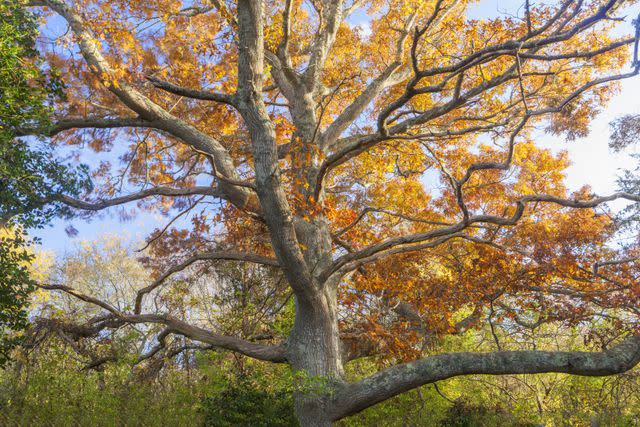
Getty Images
Botanical Name: Quercus coccinea
Height: 50 to 80 feet
Spread: 45 to 60 feet
This oak has narrow leaves with pointy lobes, and it tolerates a wide range of soils. The foliage turns brilliant scarlet in fall, so it’s often chosen for its autumn color. Scarlet oak grows more quickly than some other types.
Nuttall Oak
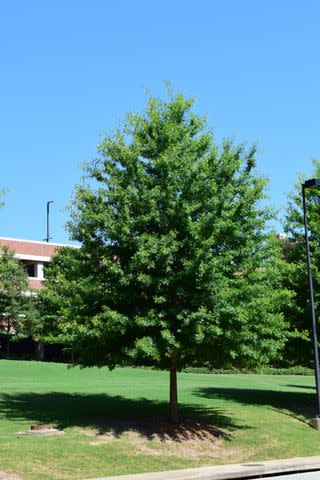
Nancy Loewenstein, Auburn University
Botanical Name: Quercus nuttallii
Height: 40 to 80 feet
Spread: 30 to 60 feet
Nuttall oaks are faster-growing oaks. They have an oval shape and good branching, making them ideal shade trees. It tolerates many soil types. They also get yellow to orange to red fall color, though not as intense as scarlet oaks.
Overcup Oak
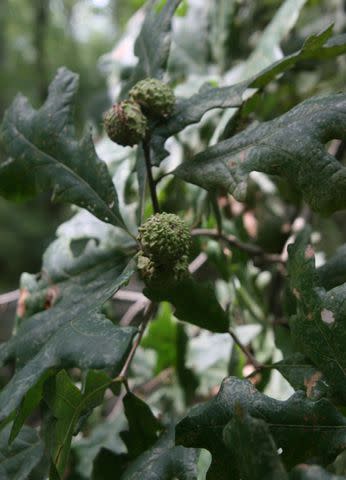
Chris Evans, University of Illinois, Bugwood.org
Botanical Name: Quercus lyrata
Height: 35 to 60 feet
Spread: 35 to 60 feet
The overcup oak has loads of character, especially as a young tree. It has scaly bark and dark green leaves that turn yellow-brown in fall. It tolerates many kinds of soils. It’s named for its acorn cap that covers most of the fruit.
Shumard Oak
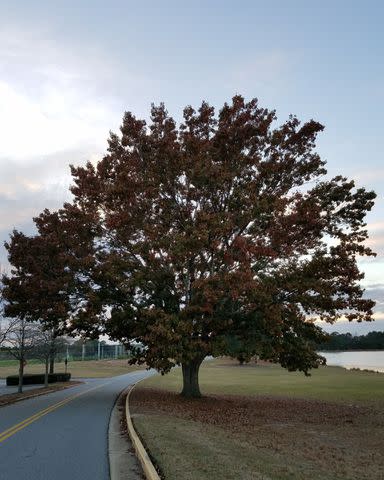
Rebekah D. Wallace, University of Georgia, Bugwood.org
Botanical Name: Quercus shumardii
Height: 50 to 70 feet
Spread: 30 to 40 feet
Shumard oaks are reliable medium-sized oaks with handsome pointy-lobed leaves and small acorns, which aren’t produced until the tree is 25 years old. It tolerates many soil types and also turns lovely red and orange hues in fall.
Swamp Chestnut Oak
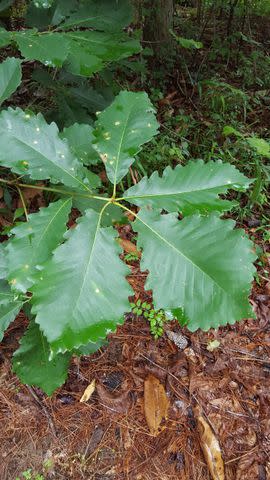
Nancy Loewenstein, Auburn University
Botanical Name: Quercus michauxii
Height: 60 to 80 feet
Spread: 30 to 70 feet
This deciduous oak is native to lowland and swampy areas so it can tolerate more moisture than other types. The leaves are shiny green with rounded teeth and wavy margins and are similar to those of the chestnut oak. Swamp chestnut oak prefers sandy soils.
For more Southern Living news, make sure to sign up for our newsletter!
Read the original article on Southern Living.

